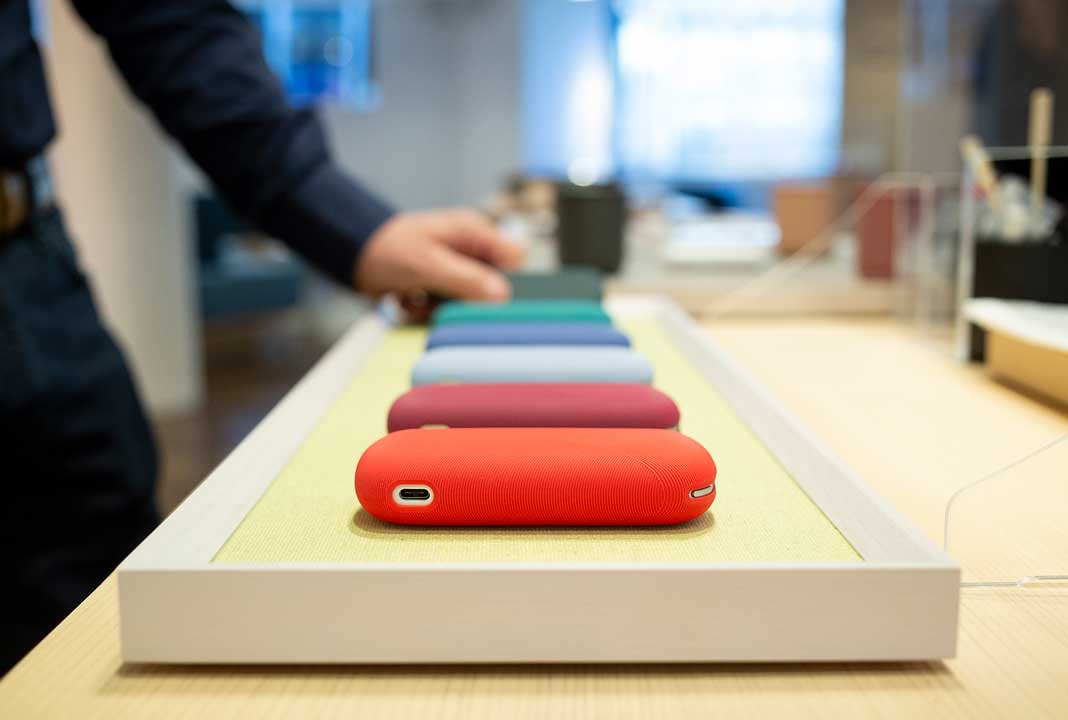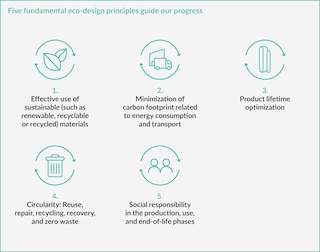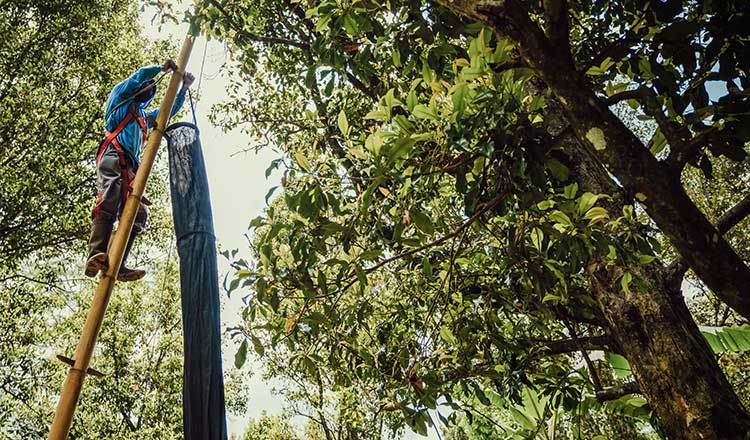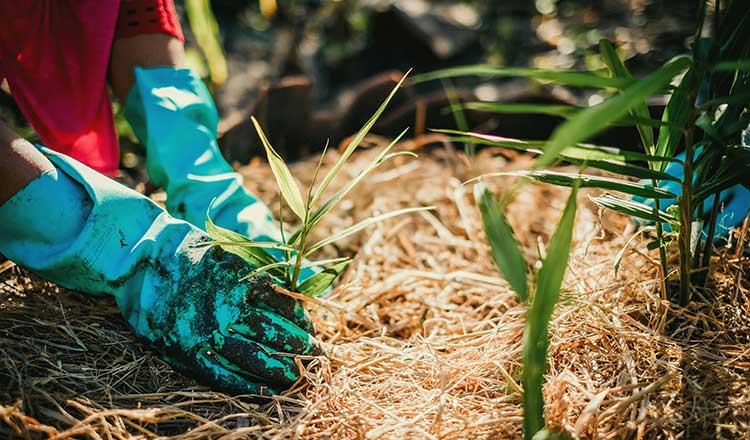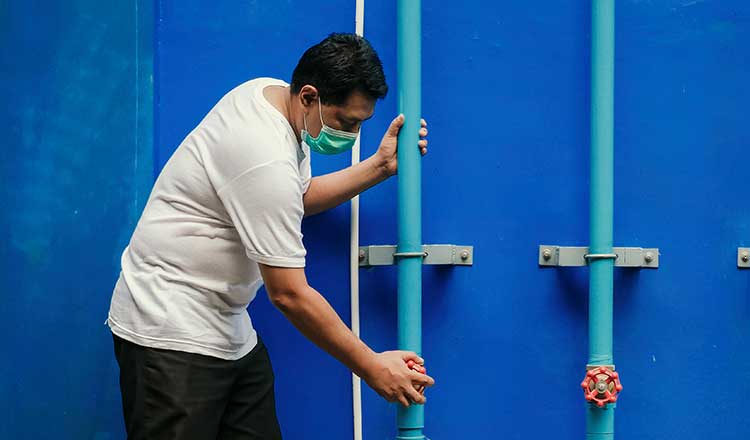| INTEGRATED REPORT 2020 |
Building sustainability considerations into product design is a way to control environmental and social impacts across a product’s life cycle—from development and manufacturing to use and disposal.
Topic description
For PMI, contributing to the circular economy means developing more environmentally friendly products—devices, consumables, accessories, and packaging—by improving their recyclability, efficiency, life span, and repairability, and reusing our own materials again.
Littering prevention is a tier 1 topic within our strategic pillar Protecting the environment.

Our progress in 2020
read more
The right thing to do
By integrating sustainability considerations into our products—from development to end-of-use—we can lower their environmental and social impacts and associated costs. Potential benefits include energy savings, reduced consumption of natural resources, waste minimization, and a longer product life span. Minimizing the negative environmental and social impacts of products commercialized at scale can help safeguard the interests of future generations.
The business case
Natural and social capital costs of non-renewable resource extraction and disposal impact the cost of doing business. Commodity and raw material prices will continue to remain volatile as climate change, demographics, and technological innovation impact resource supply and demand. In addition, regulatory requirements, including landfill closures, material bans, and extended producer responsibility policies, are proliferating globally. The concept of the eco-design and circularity makes business sense as it represents a remarkable economic opportunity, while simultaneously delivering environmental and social benefits. It increases speed and reduces cost across different electronic products due to common components. It also reduces costs of returns, obsolescence, and disposal, which can otherwise be significant. We further believe that investing in eco-design and circularity may accelerate growth by spurring innovation of new products and reducing operating costs. Moreover, it can prevent reputational challenges by strengthening relationships with customers and employees.
Our aims:
100%
percentage of PMI smoke-free product users who have access to collection and recovery for devices and consumables by end 2025
100%
percentage of PMI’s smoke-free electronic devices introduced on the market as of end 2025 that have eco-design certification
Achieving our aims
At PMI, we are committed to understanding and managing environmental and social impacts across our entire value chain, including the life cycle of our products. Focusing on their sustainability is particularly important as we continue to deliver technologically advanced products that are at the heart of our transition to a smoke-free future.
With respect to our smoke-free products, our 2025 eco-design and circularity ambitions, which extend to electronic devices, accessories, and consumables, are as follows:
- Provide access to collection and recovery for the device and its consumables to all IQOS users
- Continue to reduce the carbon footprint of our smoke-free products in line with our science-based targets
- Achieve eco-certification for all our PMI smoke-free electronic devices introduced on the market as of the end 2025
Meeting these goals relies on a systematic approach whereby sustainability is considered from the start of the product development process. Our work is guided by our sustainable product design strategies, which account for impacts related to materials selection and sourcing, components production and product manufacturing, distribution, use, and end-of-life.
Our sustainable design guidelines, developed in 2019, support decision-making and help to integrate sustainability throughout our innovation process. We have now fully embedded these guidelines into our innovation stage-gate processes and continually reinforce our requirements and principles at each stage. In 2020, we continued to advance this program by incorporating sustainability into our predevelopment processes, recognizing that the exploration of new technologies will play a critical role in the sustainability performance of our future product portfolio. Our five eco-design principles are applied to various degrees across PMI’s product innovation, with an eye to achieving the highest sustainability impact. Each product generation we launch incorporates improvements in, for example, quality, functionality, ease of use, or robustness.
Performance is shared regularly with senior management in our Product and Consumer teams through the established development governance framework. We are committed to evaluating sustainability characteristics and making design choices that will continually enhance the performance of all our products and packaging. Life-cycle analysis (LCA) and other relevant environmental assessments are performed prior to the launch of any product, and results are presented in internal decision-making forums per our sustainable design governance programs. We continue to advance these technical environmental assessments earlier into our development cycle, understanding the impacts and sustainability potential of new innovations at the earliest stage.
In 2018, we adopted a centralized approach to the end-of-life of our devices by establishing two CIRCLE (Central Inspection and Recycling for a Closed Loop Economy) hubs, in Europe and Asia. The benefits of this approach include economies of scale, regional investment, illicit trade prevention, and quality enhancement (accelerating manufacturing and design improvements minimizes product returns). On certain occasions, due to regulatory restrictions governing cross-border e-waste transportation, we may complement our centralized approach with more localized solutions.
Our 2025 eco-design and circularity ambitions apply to the electronic devices developed by PMI. In 2020, PMI commercialized devices developed by KT&G under the endorsement of the IQOS brand in certain markets. As KT&G owns the development and manufacturing of these devices, many of our sustainability initiatives cannot be applied. However, due to our commitments toward environmental protection and product quality, the CIRCLE inspection and take-back program is open to KT&G devices commercialized by PMI, and we aim to achieve similarly high standards of performance for these devices.

Our design and engineering teams have been trained by internal and third-party experts to embed our eco-design standards. This applies to devices, consumables, accessories, as well as packaging. To continue building momentum for this program, the Product Sustainability team regularly engages in various departmental forums to promote sustainability in design, share strategies, and workshop ways in which individuals and teams can better contribute to meeting our overall product design goals. We have set expectations and requirements for each new product iteration and monitor them throughout the design and production process.
Stakeholder engagement
We periodically benchmark our design program against those of other leading companies to determine whether modifications are needed to ensure the highest standards, including engagement in forums focused on circularity within the electronics industry—directly addressing some of our highest priority issues.
To support our efforts to build a more circular business model for our reduced-risk products, we actively seek to engage with external stakeholders and learn from industry leaders. In 2020, we engaged in a project with the World Business Council for Sustainable Development (WBCSD), on identifying best practices in circular electronics, including business model development and product design. The learnings identified will help PMI further develop our ambitions in eco-design and circularity.

Our progress in 2020
read more
Performance metrics
view dataThis online content about our Integrated Report should be read in conjunction with PMI’s 2020 Integrated Report. The information and data presented here cover the 2020 calendar year or reflect status at December 31, 2020, worldwide, unless otherwise indicated. Where not specified, data come from PMI estimates. Please also refer to 'About this report' on page 3 of the 2020 Integrated Report for more information. Aspirational targets and goals do not constitute financial projections, and achievement of future results is subject to risks, uncertainties and inaccurate assumptions, as outlined in our forward-looking and cautionary statements on page 145. In the 2020 Integrated Report and in related communications, the terms “materiality,” “material,” and similar terms, when used in the context of economic, environmental, and social topics, are defined in the referenced sustainability standards and are not meant to correspond to the concept of materiality under the U.S. securities laws and/or disclosures required by the U.S. Securities and Exchange Commission.
